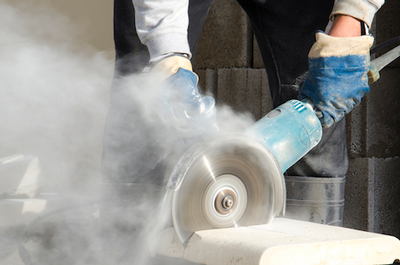THURSDAY, OCTOBER 26, 2017
The 30-day enforcement grace period for the U.S. Occupational Health and Safety Administration’s Respirable Crystalline Silica in Construction Standard is over, and acting Deputy Assistant Secretary Thomas Galassi released a memorandum late last week that outlines interim enforcement guidelines that took effect on Monday (Oct. 23).
.png)
.png) |
| Technology Publishing Co. |
|
The U.S. Occupational Health and Safety Administration’s 30-day grace period for the respirable silica standard is over, and the agency is fully enforcing the rule. |
The guidelines do not cover all of the provisions, the memo notes, but will act as the standard's companion compliance directive as the rule proceeds through the review process. The guidelines cover items such as safety and health officers collecting breathing zone samples on the first day of an inspection.
The Rule
The final silica rule amended silica exposure regulations for the first time since 1971, reducing the permissible exposure limit for crystalline silica to 50 micrograms per cubic meter of air, averaged over an eight-hour shift.
The final rule is written as two standards: one for construction and one for general industry and maritime. The October memo also clarified that the original enforcement date of Sept. 23 only applied to the construction standard and that inspections procedures for the industry and maritime industries remain unchanged until that compliance date, which is June 23, 2018.
Mandatory provisions for employers also include:
Delay and Challenges
At the end of September, a 30-day grace period was implemented for employers making a good-faith effort to comply with the new rule.
“OSHA will render compliance assistance and outreach to assure that covered employers are fully and properly complying with its requirements,” Galassi added in a memo at the time.
 |
| © iStock.com / Mogala |
|
The final silica rule amended silica exposure regulations for the first time since 1971, reducing the permissible exposure limit for crystalline silica to 50 micrograms per cubic meter of air, averaged over an eight-hour shift. |
Kevin Cannon, the senior director of safety and health services for the Associated General Contractors of America, had told Engineering News-Record at the time that, even though the 30-day extension would give employers more time to better understand the terms of compliance, he was disappointed with OSHA’s compliance assistance system was restricted to site visits. “That will only be a few people,” he added.
Previously, construction industry groups had challenged OSHA’s new rule in court, stating that it was not economically or technically feasible, and that it did not factor how often construction work changes.
However, OSHA says that the rule will save more than 600 lives and prevent more than 900 cases of silicosis annually.
According to officials, about 2.3 million men and women are exposed to respirable crystalline silica in their workplaces, including 2 million construction workers who drill and cut silica-containing materials such as concrete and stone. An additional 300,000 workers in operations such as brick manufacturing, foundries and hydraulic fracturing also face exposure.
A panel of judges heard arguments on the rule's appeal at the end of September.
Tagged categories: Abrasive blasting; Government; Health & Safety; OSHA; Silica; Silica rule